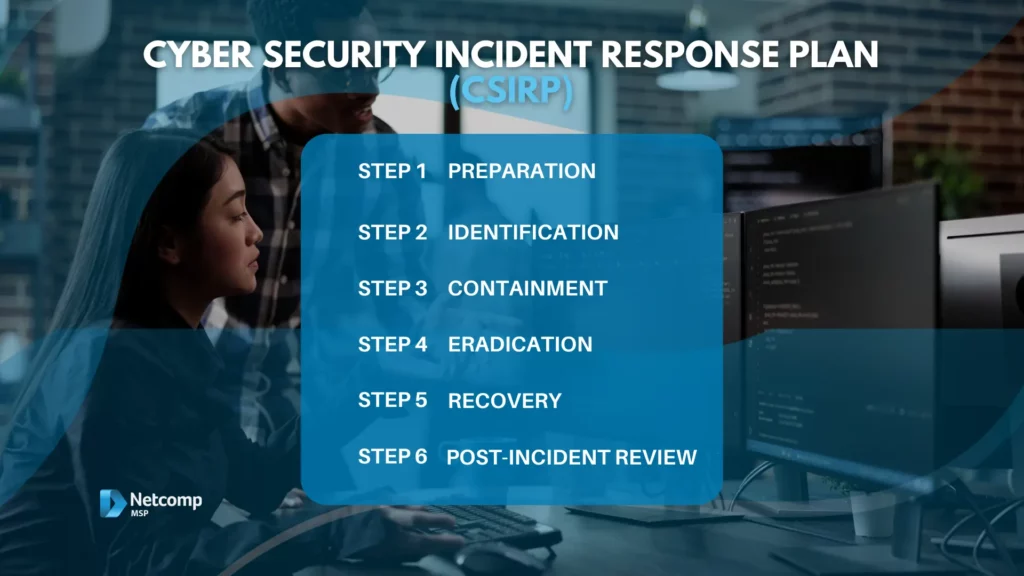Data breaches are a growing concern in Australia . Specifically, cyberattacks and data security incidents are becoming more common . For example, in the first half of 2024, the Office of the Australian Information Commissioner (OAIC) received 527 data breach notifications . Furthermore, this was the highest number in over three years . Consequently, this highlights a concerning trend . Therefore, individuals and businesses need to be vigilant in protecting their information. But how can you check if your data has been breached? This article will guide you through the essential steps to determine if your personal information has been compromised and provide advice on protecting yourself. A data breach occurs when personal information is accessed without authorisation . Similarly, it can also occur when this information is disclosed or lost without authorisation . Overall, this can have serious consequences . For instance, these consequences can include financial loss, identity theft, and damage to reputation.
To address this, Australia has implemented the Notifiable Data Breaches (NDB) scheme . Essentially, this scheme requires businesses to notify individuals of eligible data breaches . Moreover, they must also notify the OAIC. Specifically, this applies when there is unauthorised access to personal information . Likewise, it also applies to unauthorised disclosure or loss of such information . Importantly, the breach must be likely to result in serious harm.

How Do I Know if I Have Been Hacked?
It’s crucial to be aware of the warning signs that may indicate your data has been compromised in a breach. These signs include:
- Notifications from companies. Firstly, you might receive a notification from a company . For example, this could be an email or letter informing you of a data breach.
- Unfamiliar account activity. Secondly, you might notice unfamiliar account activity . This could include unusual login attempts, password changes, or transactions.
- Unexpected messages. Thirdly, you might receive unexpected messages . Specifically, these could be suspicious emails, texts, or calls requesting personal information. Alternatively, they might prompt you to click on links.
- Account access issues. Moreover, you might experience account access issues. For instance, you might have difficulty logging in. Or, your account settings might be changed without your knowledge.
- Unexplained charges. Finally, you might find unexplained charges . These could be on your bank, credit card, or other financial statements.
If you suspect you’ve been hacked, the Australian Cyber Security Centre (ACSC) can help . Specifically, they provide information and resources to help you determine if your information has been compromised. In addition, they offer advice on steps to take, such as securing your accounts and reporting cybercrimes. However, government resources are not the only option. For comprehensive and proactive cyber security measures, consider partnering with a specialised local IT support provider, like Netcomp. These experts can offer tailored solutions to protect your business from cyber threats, including data breach prevention, detection, and response. Having a dedicated cyber security specialist can provide peace of mind and ensure your business remains secure.
How to check if your data has been breached?
Fortunately, there are resources available to help you check if your data has been compromised in a data breach.
- Have I Been Pwned. Firstly, you can use “Have I Been Pwned” website. This website allows you to check if your email address or phone number has been exposed . Moreover, it provides information on the breaches and the types of data compromised . Additionally, it offers recommendations for action.
- Government resources. Secondly, you can use government resources . For instance, the OAIC and IDMatch websites offer information and support . In particular, they provide guidance on protecting your identity and recovering from a breach .
- Credit reporting agencies. Thirdly, you can contact credit reporting agencies in in Australia . Examples include Equifax, Illion, and Experian . Essentially, this can help you identify signs of identity theft . These agencies maintain records of your credit history and can alert you to any suspicious activity, such as unauthorised credit applications or accounts opened in your name.
- Company websites: Finally, check company websites regularly . Many companies proactively inform customers of breaches and provide guidance .
Breach Email
If your data has been compromised in a data breach, you will typically receive a notification email from the affected organisation. This email should include the following information:
- Organisation details. Firstly, it should include the organisation’s details . For example, this includes their identity and contact information.
- Breach description. Secondly, it should describe the breach . This includes how it occurred and the extent of the data compromised.
- Data compromised. Thirdly, it should specify the data compromised.
- Recommended actions. Lastly, it should recommend actions to take . For example, this could include changing passwords or contacting authorities.
Here’s an example of what a data breach notification email might look like:
Subject: Important Information Regarding a Recent Data Security Incident
Dear,
We are writing to inform you of a recent data security incident that may have involved some of your company’s information. At, we take data protection and privacy very seriously, and we are committed to keeping our partners informed about matters that may affect them.
On, we discovered unauthorised access to a portion of our systems. We immediately launched an investigation and took steps to secure our systems and prevent further unauthorised access. Our investigation determined that the following types of information may have been accessed:
- Company name and contact information
- Employee contact information (names and business email addresses)
- Project-related documents and data
We have no evidence that sensitive financial information or personal data beyond business contact details were affected.
So we recommend that you take the following steps to protect your company:
- Review your internal security protocols and ensure your employees are aware of best practices for data security.
- Remind employees to be vigilant of suspicious emails and phishing attempts.
- If you have shared login credentials for any joint projects or platforms, change those passwords immediately.
We sincerely apologise for any inconvenience or concern this incident may cause. Also we are committed to protecting your information and have taken steps to enhance our security measures to prevent future incidents.
For more information, please visit our website or contact our dedicated support line at.
Sincerely,
Different Types of Data Breaches
Understanding the different ways data breaches can occur is crucial for both individuals and businesses to implement effective preventative measures. Here are some common types of data breaches:
- Phishing attacks. These attacks use deception to trick individuals . For example, they might use emails, text messages, or websites. The goal is to trick people into revealing personal information .
- Malware infections. Malware can infect computer systems . Examples of malware include viruses, worms, or ransomware. Also malware can steal data, encrypt files, or disrupt operations. If you want to know more about malware, read this article.
- Insider threats. These breaches involve individuals within an organisation . So these individuals misuse their access to data . Generally, their motives might be malicious or for personal gain
- Stolen or compromised credentials. Hackers can gain access to systems by stealing credentials . Alternatively, they might compromise credentials. For instance, they might achieve this through brute-force attacks, credential stuffing, or social engineering .
- System vulnerabilities. Also attackers can exploit weaknesses in systems . These weaknesses might be in websites, operating systems, or software applications. As a result, exploiting these weaknesses can allow attackers to gain unauthorised access to data.
Report and Recover from a Data Breach

If you are affected by a data breach, it’s important to take immediate action to report the incident and mitigate potential harm. Here are the key steps to take:
- Report the breach:
- Firstly, contact the affected organisation to report the breach and gather information about the incident.Secondly, notify the OAIC, especially if you believe the organisation has not adequately protected your information or complied with the NDB scheme. Thirdly, report cybercrimes to ReportCyber, the Australian Cyber Security Centre’s online reporting portal.
- Finally, if the breach involves tax file numbers or other tax-related information of your employees or clients, contact the Australian Taxation Office (ATO) to report the breach and discuss protective measures. Businesses should also contact the ATO’s Client Identity Support Centre for assistance in protecting their clients and staff.
- Recover from the breach:
- Secure your systems. To begin with, immediately take steps to contain the breach and prevent further unauthorised access. This may involve isolating affected systems, resetting passwords, and patching vulnerabilities.
- Investigate the breach. Next, conduct a thorough investigation to determine the scope of the breach. Additionally, identify the root cause, and assess the potential impact on your business and stakeholders.
- Communicate with stakeholders. Subsequently, transparently communicate with affected individuals, clients, partners, and regulatory bodies about the breach. Also outline the steps you are taking to address the situation.
- Review and update your security measures. Following this, review your existing security policies, procedures, and technologies, and implement necessary updates to prevent future breaches. For example, this may include strengthening password policies, implementing multi-factor authentication, and enhancing data encryption.
- Seek professional assistance. Finally, consider engaging cyber security expert or legal counsel to assist with the recovery process, particularly if the breach is complex or involves sensitive information.
Key preventative measures:
- Strong passwords and multi-factor authentication. First and foremost, senforce strong, unique passwords for all employee accounts and enable multi-factor authentication wherever possible.
- Data encryption. In addition, encrypt sensitive data, both in transit and at rest, to add an extra layer of security.
- Regular security awareness training. Equally important, educate your employees about cybersecurity best practices, including recognising phishing scams, protecting sensitive information, and reporting suspicious activity.
- Incident response plan. Lastly, develop and regularly test an incident response plan to ensure your business is ready to effectively handle data breaches.
What Happens if a Business Has a Data Breach?
In Australia, businesses have legal obligations to protect personal information and respond to data breaches under the Privacy Act 1988 and the NDB scheme. These obligations include:
- Firstly, taking reasonable steps to protect personal information from misuse, interference, loss, and unauthorised access, modification, or disclosure.
- Secondly, notifying affected individuals and the OAIC of eligible data breaches as soon as practicable.
Failing to comply with these obligations can have serious consequences for businesses, including:
- Financial penalties. Firstly, organisations may face substantial fines for serious or repeated interferences with privacy.
- Reputational damage. Moreover, data breaches can erode customer trust and damage a business’s reputation. As a result, this can lead to potential loss of revenue and market share.
- Legal action. Finally, affected individuals may take legal action against businesses that fail to adequately protect their personal information.
The Office of the Australian Information Commissioner (OAIC) has taken action against companies like Medibank and Australian Clinical Labs. Why? Because these companies allegedly didn’t follow the Privacy Act. This means they may not have kept people’s data safe. So, businesses need to be extra careful about data security. Otherwise, they might get in trouble with the OAIC too.
Recent examples of data breaches in Australian businesses:
- Optus data breach (September 2022). The Optus data breach did indeed expose the personal information of 9.8 million customers. This included names, addresses, dates of birth, and identification numbers.
- Medibank data breach (December 2022). This breach compromised the personal and health information of 9.7 million customers. Moreover, this breach was particularly concerning due to the sensitive nature of the health information involved.
- Latitude Financial data breach (March 2023). This breach exposed the personal information of 14 million customers, including driver’s license and passport numbers. Undoubtedly, this was one of the largest data breaches in Australian history.
- MediSecure data breach (May 2024). Lastly, the MediSecure data breach compromised the personal and health information of 12.9 million individuals related to prescriptions. Also, this breach highlighted the vulnerability of health data and the importance of robust security measures in the healthcare sector.

Key insights for businesses:
- Human error. Firstly, human error caused a significant number of data breaches. So this emphasises the need for businesses to provide comprehensive training to employees on data security practices.
- Shared responsibility in the cloud. Secondly, businesses should be aware that while cloud providers have security measures in place, they also share the responsibility for data security in the cloud.
- Upcoming changes to regulations.Thirdly, the Privacy and Other Legislation Amendment Bill 2024 introduces stricter penalties for non-compliance and clarify security obligations for businesses.
What are the Three (3) Kinds of Data Breach?
Generally, there are three main types of data breaches, based on their impact on data:
- Confidentiality breach. A confidentiality breach occurs when someone gains unauthorised access to data, disclosing information to individuals who should not have it.
- Integrity breach. This involves unauthorised modification of data. So this means that someone alters or tampers with information, compromising its accuracy and reliability.
- Availability breach. This involves the disruption of access to data. So this means that authorised users are unable to access the information they need.
Conclusion
Data breaches are a significant and growing threat to businesses in Australia. Indeed, the increasing reliance on technology and online services, coupled with the evolving sophistication of cyberattacks, has created a landscape where robust data security is paramount.
Therefore, businesses have a legal and ethical responsibility to protect the sensitive information they hold. To that end, implementing strong security measures, providing employee training, and staying informed about evolving threats and regulations are essential steps in mitigating data breach risks.
However, even with the best preventative measures in place, incidents can still occur. In such cases, knowing how to check if your data has been breached is crucial for taking swift action and minimising potential damage. If your business has any questions about data security or needs assistance in the aftermath of a cyber security incident, Netcomp is here to help. As a leading cyber security expert and Managed Services provider in Brisbane and Gold Coast, Netcomp offers a comprehensive range of solutions to protect your business and its valuable data. Ultimately, by partnering with Netcomp, you can proactively address vulnerabilities and ensure your business remains resilient in the face of evolving threats. Contact us today to learn more about how we can help you navigate the complex world of cyber security.



